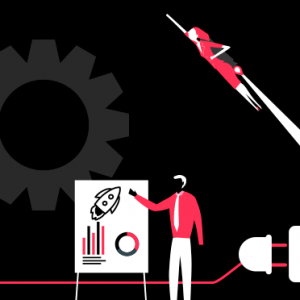Here are two articles addressing the issues and the methodological approach to be adopted to reconcile operational efficiency and cost reduction. This first article defines the issues and questions to be addressed (the second article can be found at the end of this article).

Contents
Operational efficiency doesn't just mean doing more with less
When we think of operational efficiency, we think of (brutal) cost reductions, then we think of :
- methodologies : Zero-Based Budgeting, Activity-Based Costing Cost-Benefit Analysis, Benchmarking, etc,
- levers to use,
- programs to be set up,
- sites and sub-sites,
- KPIs and dashboards,
- books to read before getting started (e.g. Fit for Growth, The Big Zero...).
But for insurers in particular, operational efficiency doesn't just mean 'doing more with less', it's also an opportunity to :
- rethinking cumbersome processes,
- optimize data use
- adopt technological solutions to lighten administrative tasks,
- involve employees in defining the solutions they will have to implement.
Asking the right questions before launching an operational efficiency project
Before launching an operational efficiency and cost containment program (because that's what it's all about), it's essential to ask certain key questions to ensure that the program is well-designed, realistic and aligned with the organization's strategic objectives.
We'll start by addressing the key questions to be asked about the program, then move on to a summary of possible approaches.
Here is a non-exhaustive list of themes and questions to address before you start structuring and analyzing:
1. What are the strategic objectives to be achieved?
Before launching a cost reduction or efficiency program, it's essential to understand the company's long-term objectives. Are we looking to increase profitability, improve competitiveness, or respond to market pressures? Are the objectives uniform across all business lines?
Some questions to ask yourself:
- What financial or operational results do we expect from this program?
- Is it a simple short- or medium-term cost reduction, or a more profound transformation of efficiency?
- How does this program help us achieve our global objectives?
- How critical is it?
2. What performance indicators should be tracked beyond cost reduction?
A cost containment program must be based on measurable indicators that are aligned with objectives. These indicators make it possible to monitor progress and adjust the program if necessary.
Some questions to ask yourself:
- What KPIs (key performance indicators) will we use to measure the program's success?
- How will we monitor improvements in real time?
- Are we tracking absolute indicators (gross or net savings) or relative indicators (cost ratios, productivity)?
- Which indicators should be monitored in parallel to avoid undesirable side-effects (contract management quality problems, claims, IT delays, etc.)?
3. What are the potential risks and impacts on quality and customer satisfaction?
As mentioned in the KPIs, the program must not generate negative side-effects, and therefore be detrimental to the quality of the products or services offered to customers. It is important to analyze how changes could affect the the customer experience.
Some questions to ask yourself:
- How will this program affect customer satisfaction?
- Do we risk losing quality or affecting service lead times?
- How can we reduce the risk?
4. How will employees be affected?
- How can we prepare teams for change?
- What are the risks of internal resistance and how can they be mitigated?
- How do you engage employees? How can we make the most of their ideas and experience?
Any operational efficiency program often involves changes for employees: reorganization, training, or even staff reductions. A change management plan is therefore essential.
Some questions to ask yourself:
5. What investments are required?
- What investments in technology, training or human resources will we need to bring this program to fruition?
- How can these investments be approved?
- Is it necessary to define an investment-to-benefit ratio for each initiative?
- How is this reflected in the objectives associated with the various markets and leadership?
Although the aim is to reduce costs, initial investments may be necessary, whether in technological tools, training or the recruitment of specialist talent.
Some questions to ask yourself:
6. What are the risks associated with the operational efficiency program?
Any change in the organization entails risks, whether financial, operational or reputational. It is essential to identify these risks upstream, and to put contingency plans in place.
The question to ask:
- What are the main risks (financial, operational, human) we have to manage in this program?
7. What are the realistic deadlines?
An operational efficiency program must have a realistic, well-defined timetable. Identifying clear milestones and prioritizing actions will help structure the program effectively.
Some questions to ask yourself:
- What are the critical phases of the program?
- What are realistic deadlines for each stage?
8. What is the level of leadership commitment?
The commitment of top management is crucial to the success of the program. Without strong support at the highest level, it can be difficult to get the necessary changes accepted.
Some questions to ask yourself:
- Is leadership ready to support the tough decisions and long-term changes needed to improve efficiency?
- What incentives are needed?
9. How can you capitalize on the gains you've made?
Once efficiency gains have been achieved, it's important to think about how to sustain them over the long term, and reinvest them in other growth initiatives.
The question to ask:
- How to reinvest savings: in innovation or continuous improvement, in re-skilling, in hiring new skills...?
10. What perimeter am I allowed to consider, between costs and levers?
Finally, the key question is not only how to structure the program, but also how to define the effort and support needed to define the strategy and approach.
This is a key issue that will have an impact on many others (project completion times, human and social impacts, commercial impacts, investments, analyses, etc.).
Example: Insurance
- Do I tackle all costs (Distribution, Claims, Overheads)?
- Do you want to consider changes to the business model or offerings (e.g. limiting high service cost/low profitability customers = > to be included in the program or not, considering that this is the role of market management in portfolio maintenance (terminations, upgrades...); e.g. impacts of product complexity on IT or customer service, etc.)?
- Do I want to consider levers such as outsourcing (but also re-internalisation in certain cases, if I authorize an increase in internal FTEs as a matter of principle) or offshoring/near-shoring, or on the contrary, are these levers incompatible with the company's values, philosophy and positioning?
- ...
Once these questions (a non-exhaustive list) have been clarified and formalized around guiding principles approved by leadership, then the company can begin the work of analysis and structuring, followed by implementation and follow-up. This will be the subject of our second article.

Operational efficiency and cost reduction: the methodology
This is the second article in our feature on operational efficiency and cost reduction. Having posed the 10 key questions to be addressed, let's now look at the methodological approaches to be adopted.

What social strategy for banks and insurance companies?
Developing and implementing a corporate social responsibility strategy is a key challenge and an asset for banks and insurance companies. In a tense macro-economic, demographic and social environment, the need to

A diet for ideal economic performance as winter approaches?
It's hard to talk about economic performance without falling into clichés like "do more with less", or "reduce your expenses and increase your sales". In the end, like a pre-summer diet, all you have to do is control your costs better.


